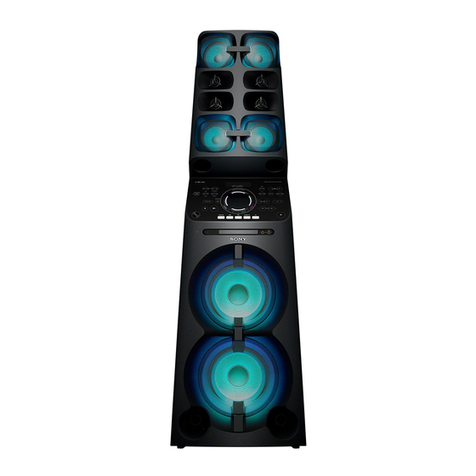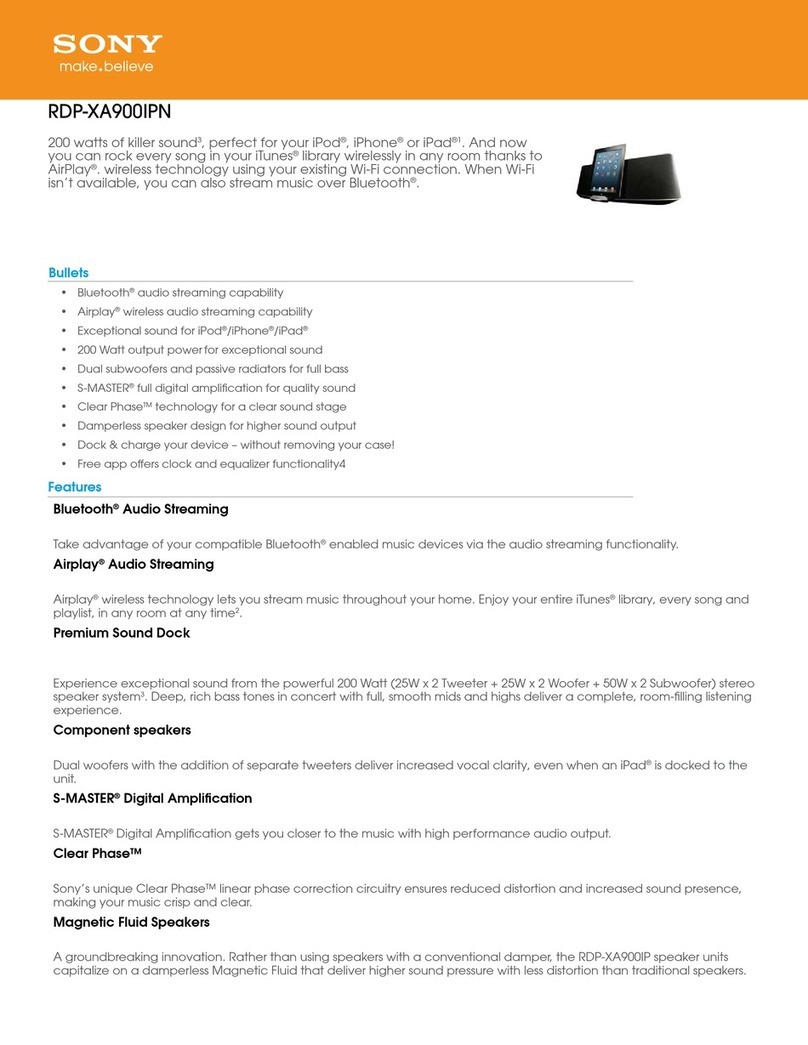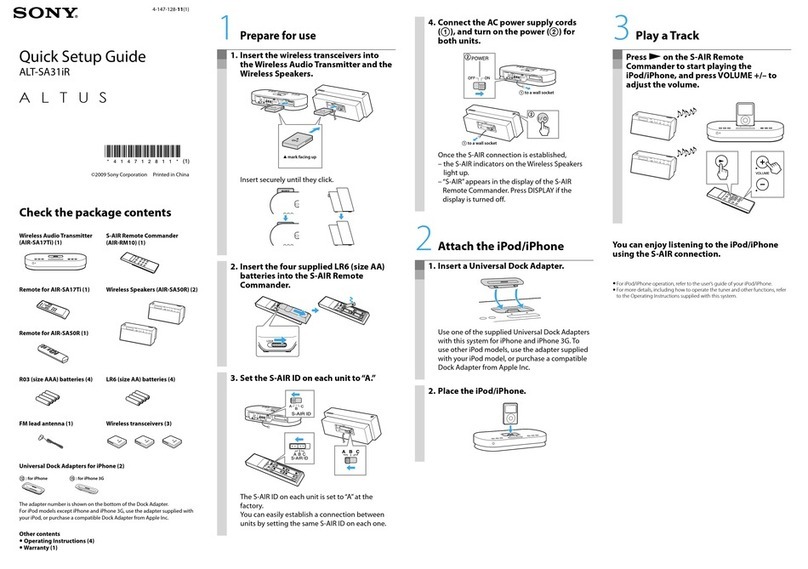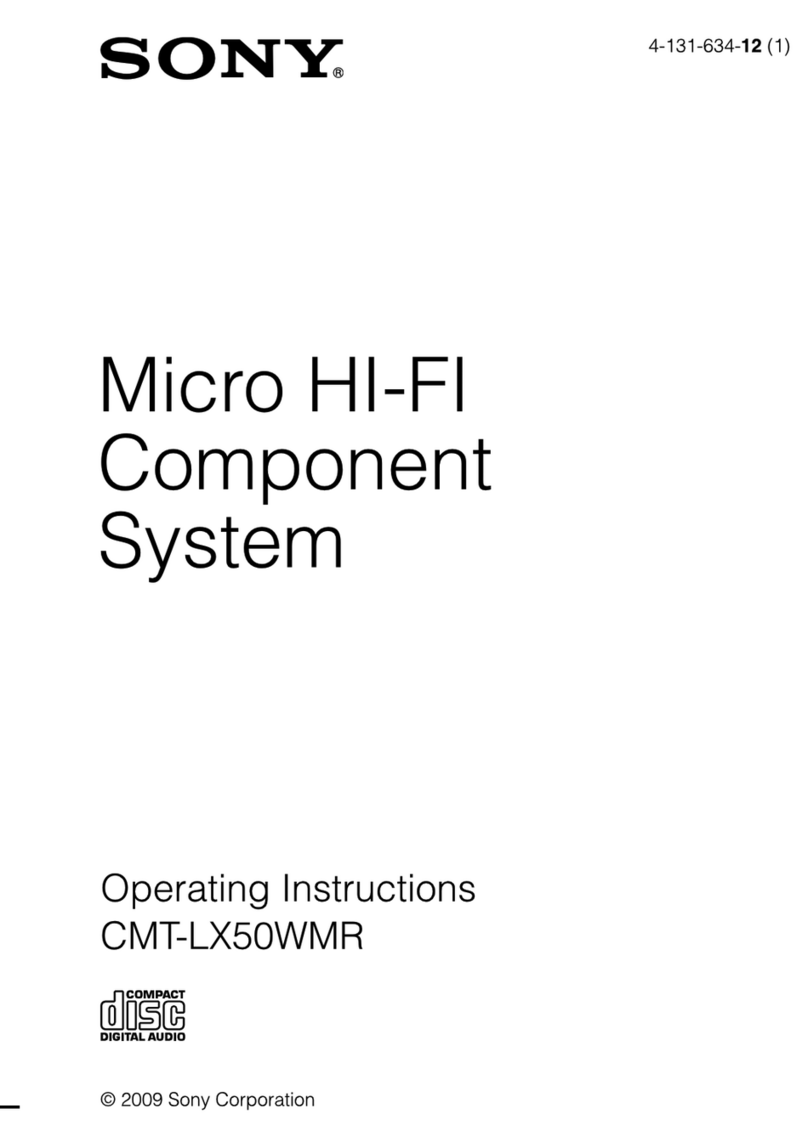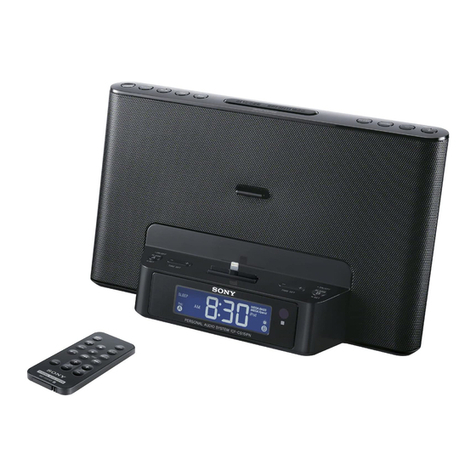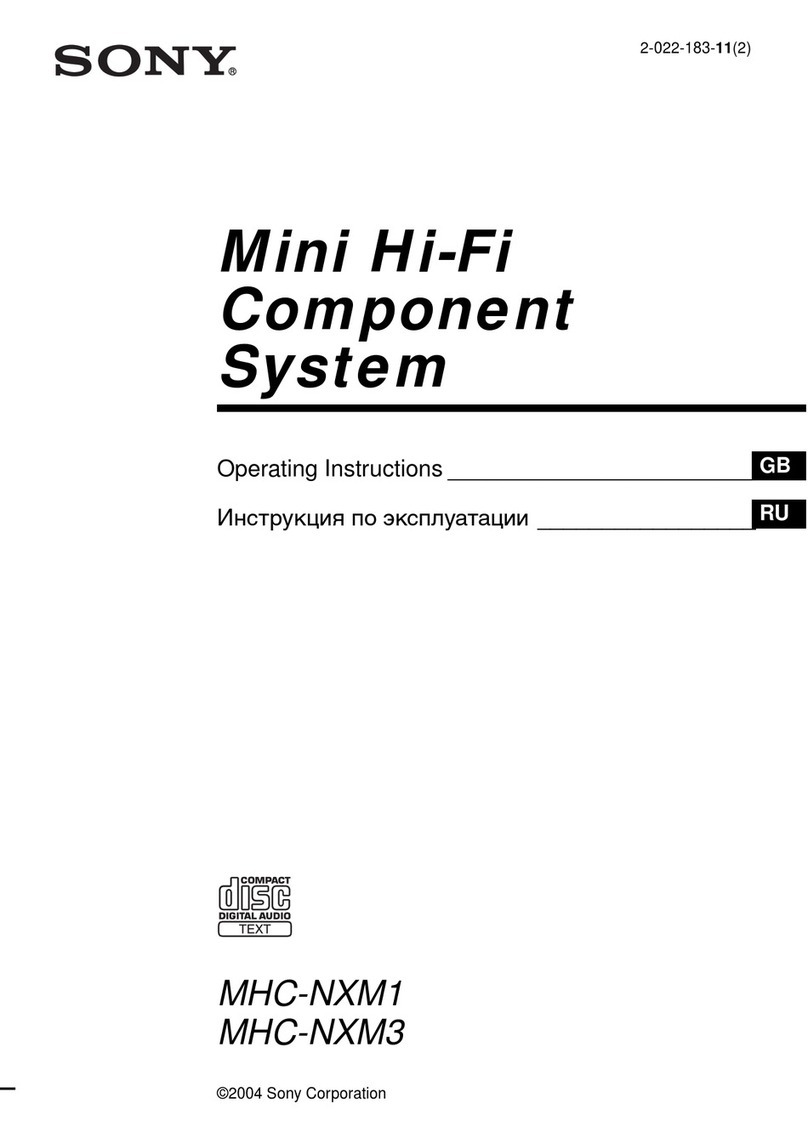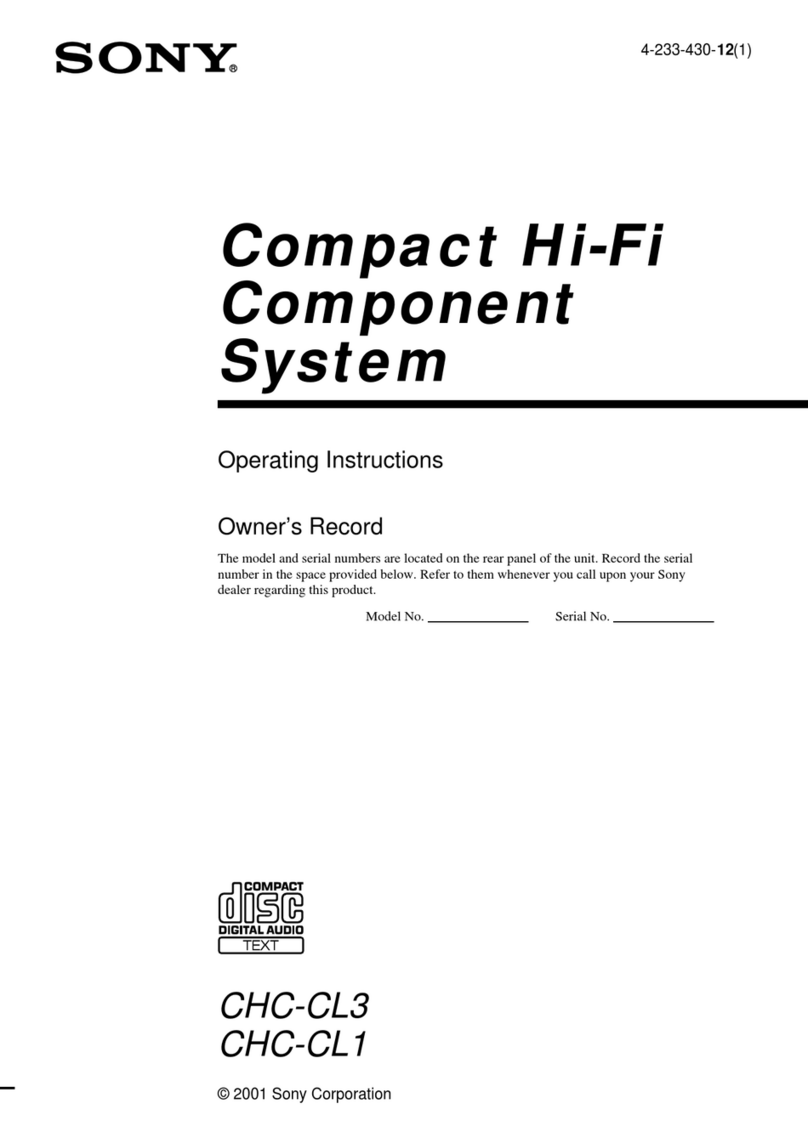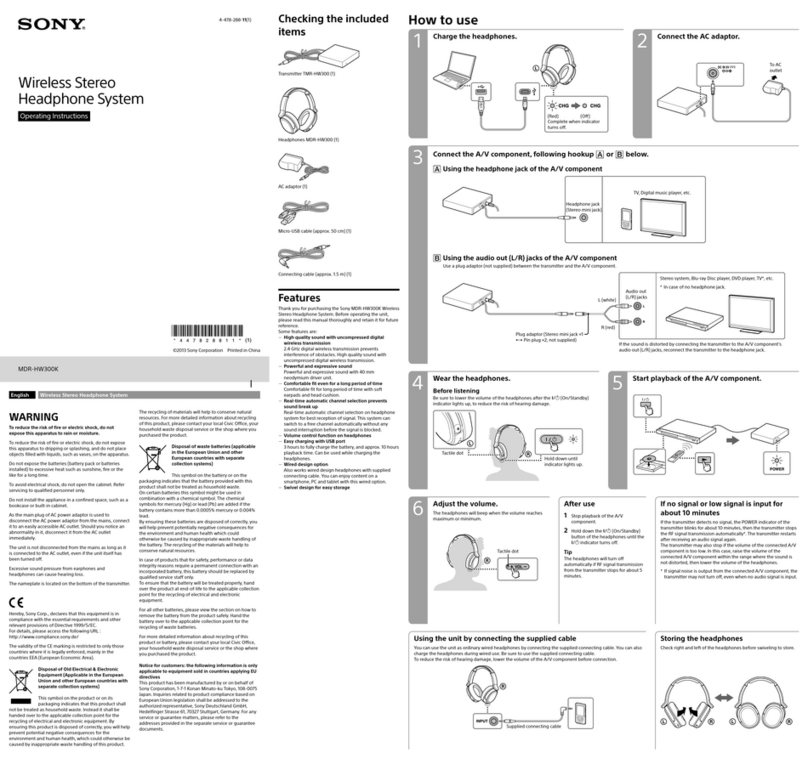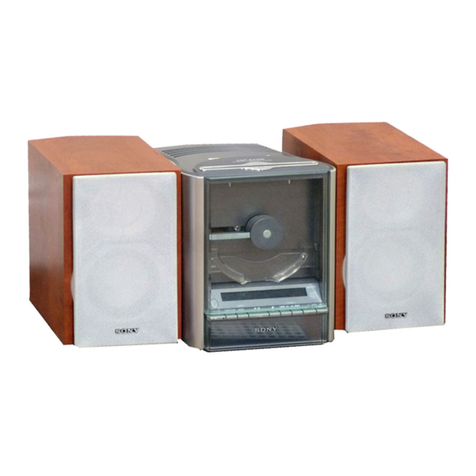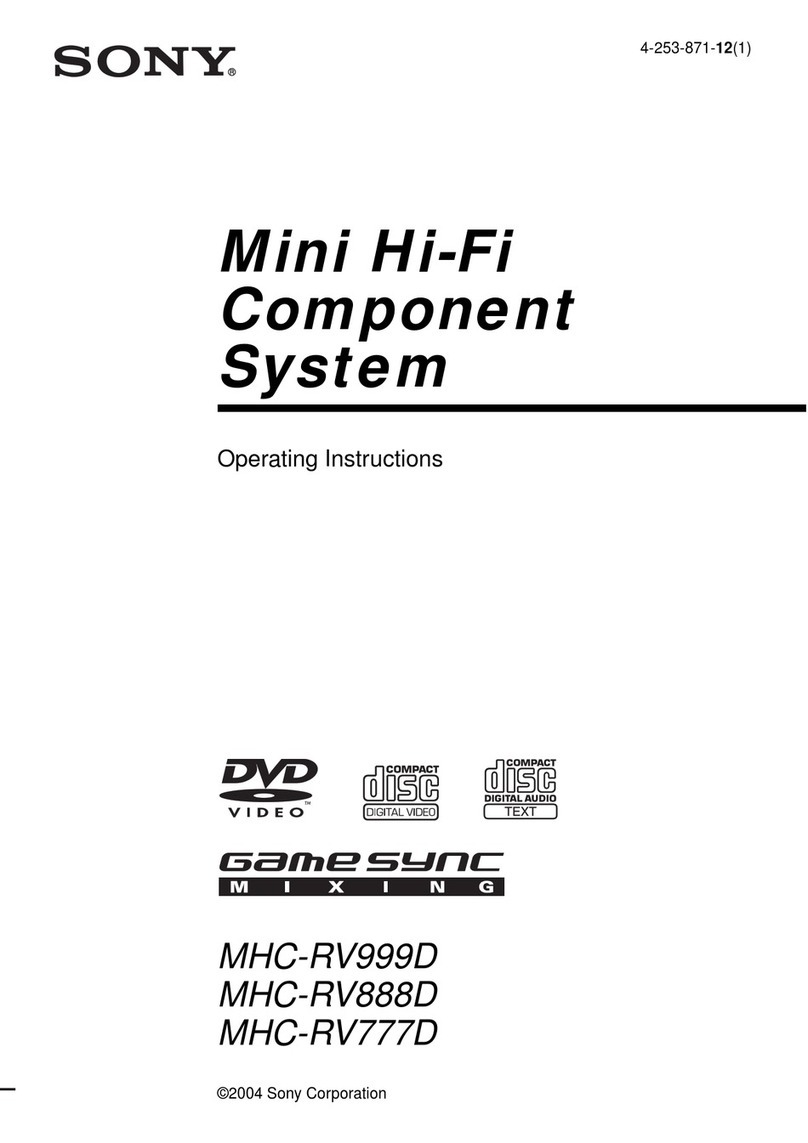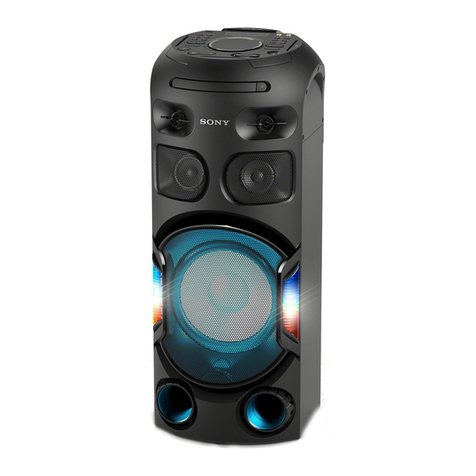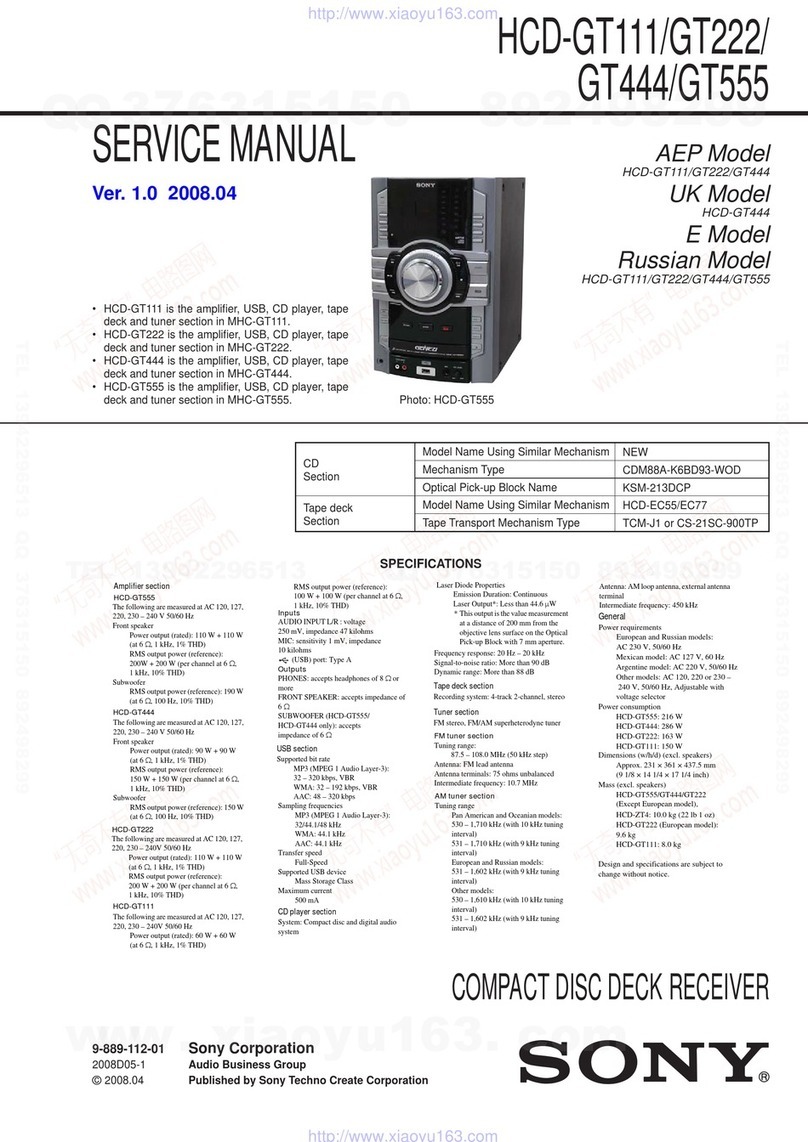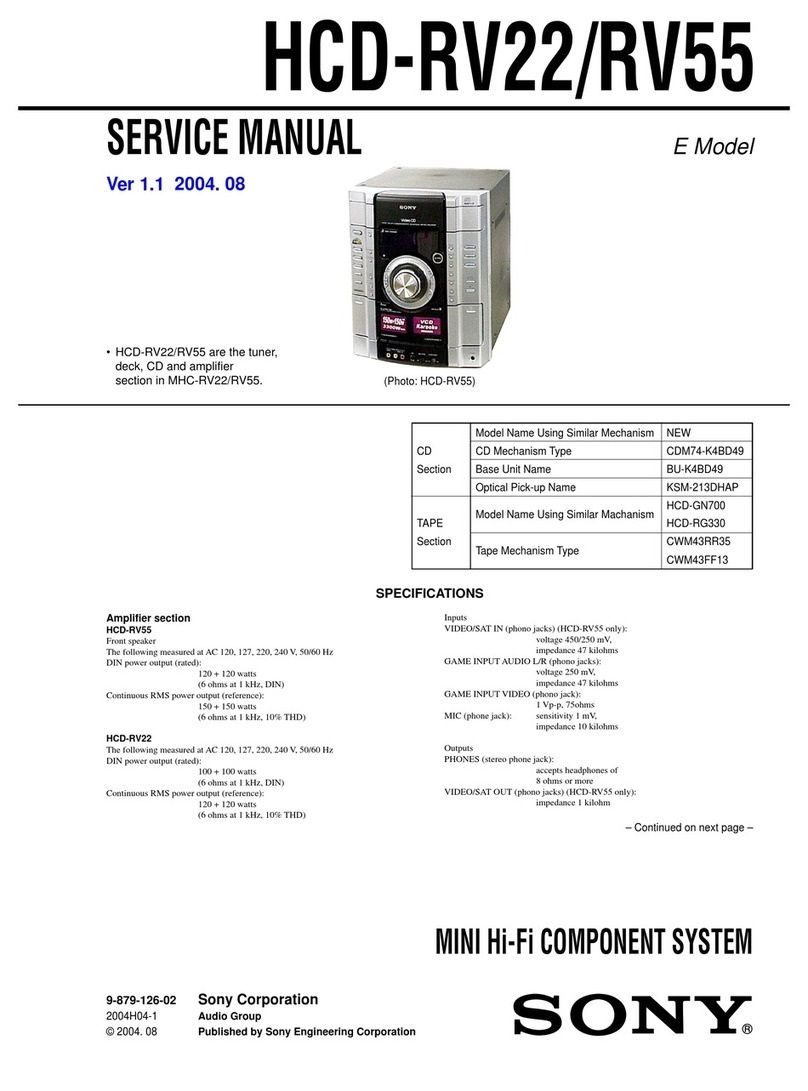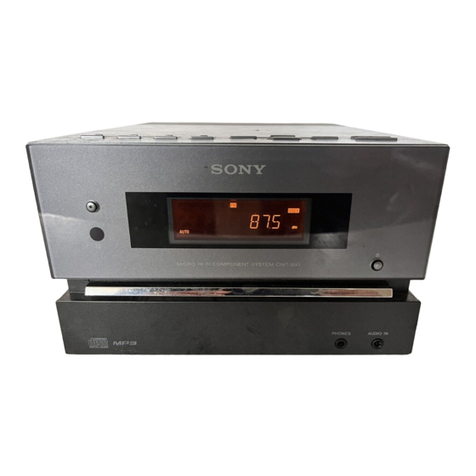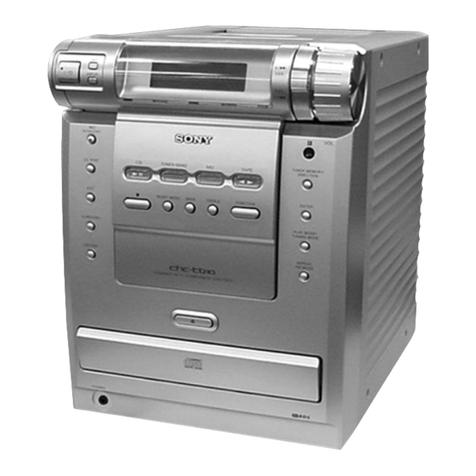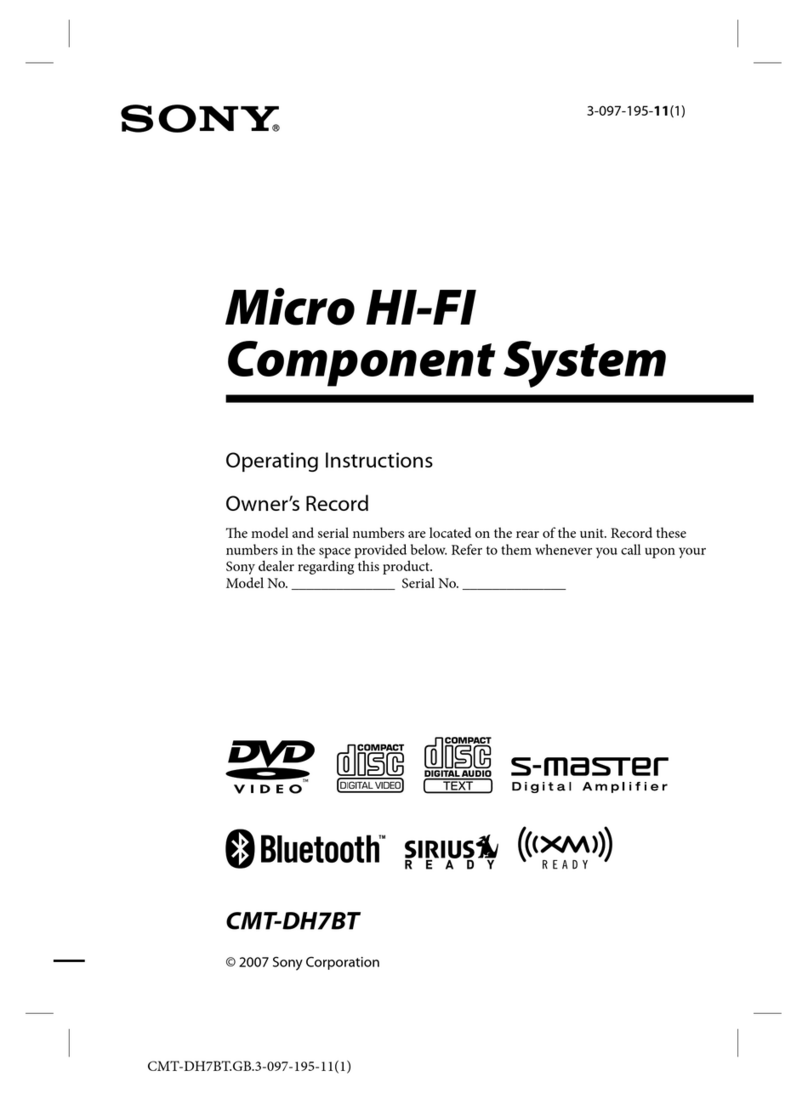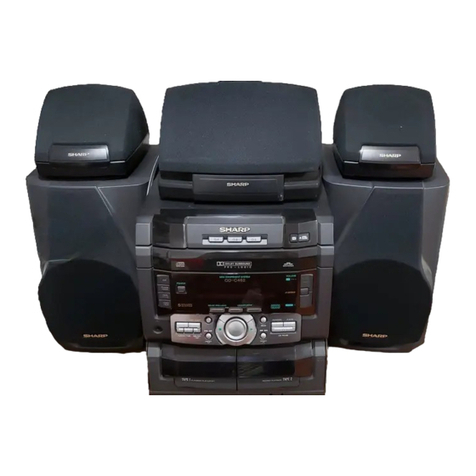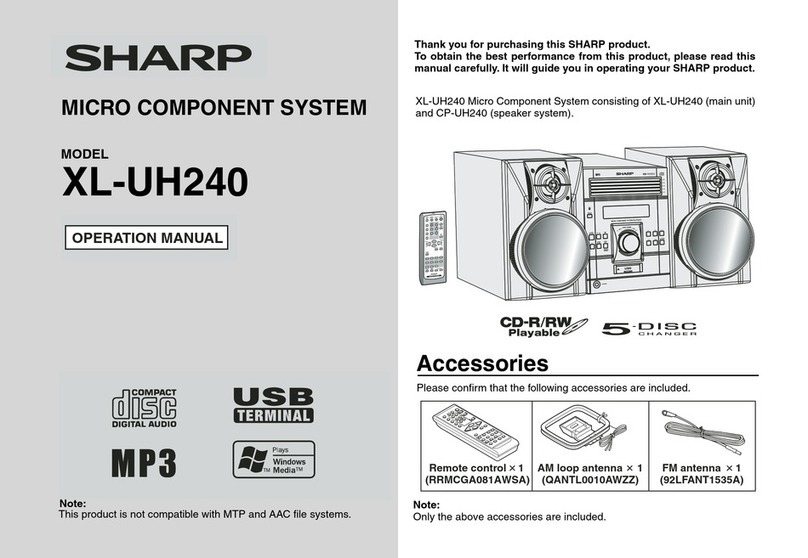
3
HCD-LX10000
TABLE OF CONTENTS
1. SERVICING NOTES ................................................ 4
2. GENERAL
Location of Controls........................................................ 5
3. DISASSEMBLY
3-1. Disassembly Flow ........................................................... 7
3-2. Side Panel, Top Case ....................................................... 8
3-3. Loading Panel Assy ......................................................... 8
3-4. Front Panel Assy .............................................................. 9
3-5. Tuner Pack ....................................................................... 9
3-6. Tape Mechanism Deck, MIC Board ................................ 10
3-7. PANEL Board, CD-SW Board ........................................ 10
3-8. CD Mechanism Deck ...................................................... 11
3-9. Back Panel ....................................................................... 11
3-10. PRIMARY Board, LIGHTING Board ............................ 12
3-11. Power AMP PC Board Assy, MAIN Board ..................... 12
3-12. SURROUND Board, PA Board ....................................... 13
3-13. Power Transformer (T1200) ............................................ 13
3-14. DRIVER Board, SW Board............................................. 14
3-15. CD Board, Optical Pick-up (KSM-215DCP/C2NP) ....... 14
3-16. SENSOR Board ............................................................... 15
3-17. MOTOR (TB) Board ....................................................... 15
3-18. MOTOR (LD) Board....................................................... 16
4. TEST MODE.............................................................. 17
5. MECHANICAL ADJUSTMENTS ....................... 21
6. ELECTRICAL ADJUSTMENTS
Deck section .................................................................... 21
CD Section ...................................................................... 22
7. DIAGRAMS ................................................................. 25
7-1. Circuit Boards Location .................................................. 26
7-2. Block Diagram – CD Section – ...................................... 27
7-3. Block Diagram – Tape/Tuner Section – ......................... 28
7-4. Block Diagram – Main Section – ................................... 29
7-5. Block Diagram – AMP Section – ................................... 30
7-6. Block Diagram – Display/Power Section –.................... 31
7-7. Printed Wiring Board – CD Board – .............................. 32
7-8. Schematic Diagram – CD Board – ................................. 33
7-9. Printed Wiring Boards – CD Mechanism Boards – ....... 34
7-10. Schematic Diagram – CD Mechanism Boards – ............ 35
7-11. Printed Wiring Board – MAIN Board – ......................... 36
7-12. Schematic Diagram – MAIN Board (1/3) – ................... 37
7-13. Schematic Diagram – MAIN Board (2/3) – ................... 38
7-14. Schematic Diagram – MAIN Board (3/3) – ................... 39
7-15. Printed Wiring Board – PANEL Board – ....................... 40
7-16. Schematic Diagram – PANEL Board – ........................... 41
7-17. Printed Wiring Boards – CD-SW, JOG, MIC, LIGHTING
Boards –........................................................................... 42
7-18. Schematic Diagram – CD-SW, JOG, MIC, LIGHTING
Boards –........................................................................... 43
7-19. Printed Wiring Board – PA Board – ............................... 44
7-20. Schematic Diagram – PA Board – .................................. 45
7-21. Printed Wiring Boards – TRANS, PRIMARY Boards – 46
7-22. Schematic Diagram – TRANS, PRIMARY Boards – .... 47
7-23. IC Pin Function Description............................................ 50
8. EXPLODED VIEWS
8-1. Case (Top), Back Panel Section ...................................... 56
8-2. Front Panel Section ......................................................... 57
8-3. Chassis Section................................................................ 58
8-4. CD Mechanism Deck Section-1
(CDM74-F1BD81).......................................................... 59
8-5. CD Mechanism Deck Section-2
(CDM74-F1BD81).......................................................... 60
9. ELECTRICAL PARTS LIST................................ 61
